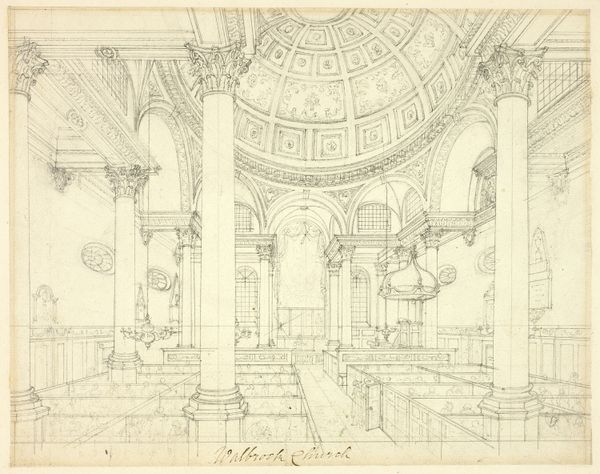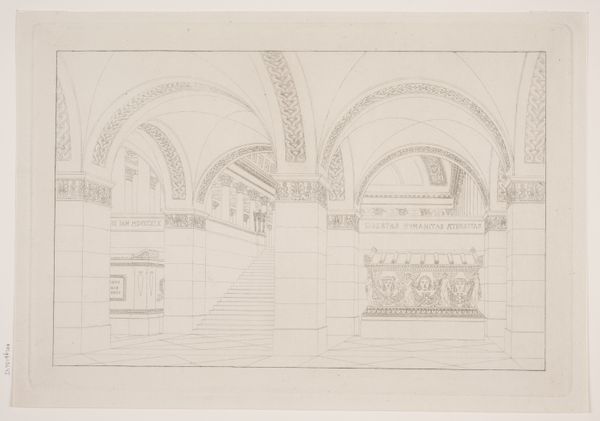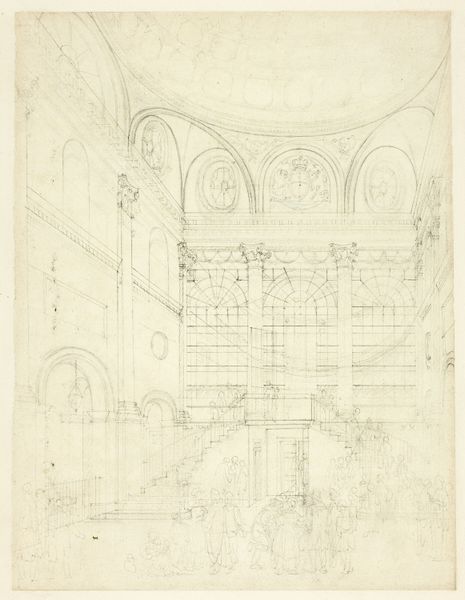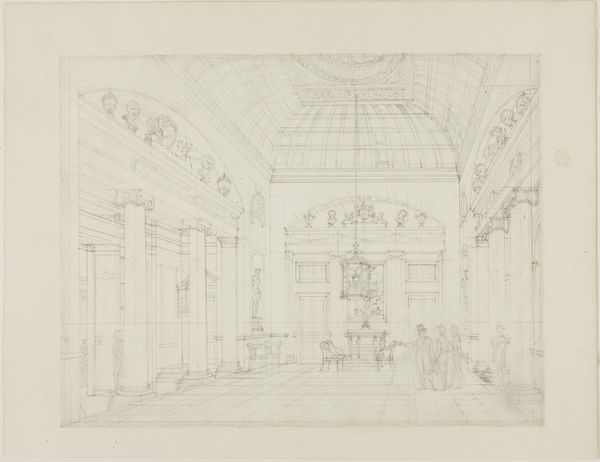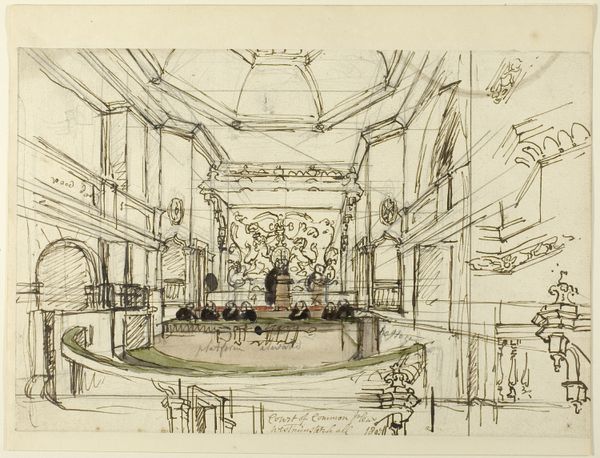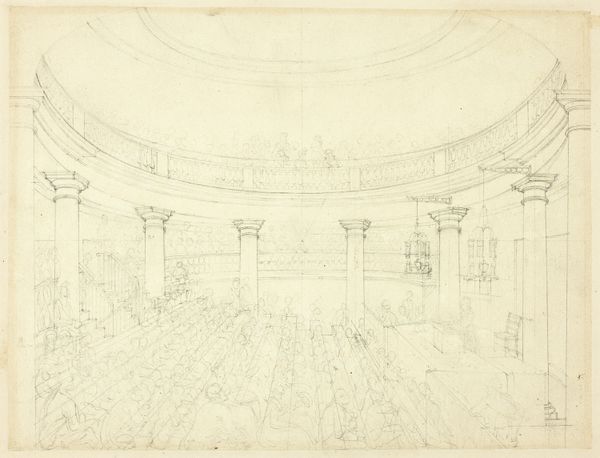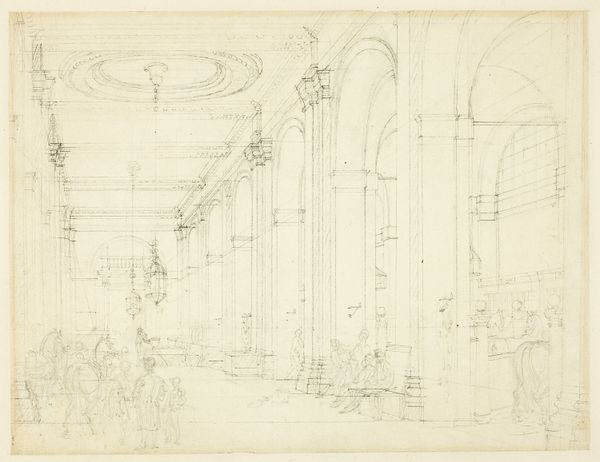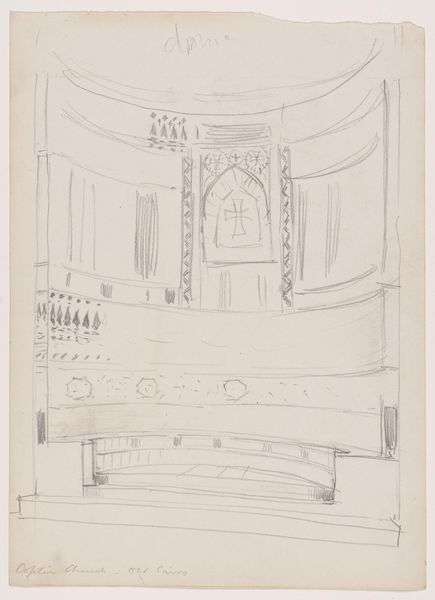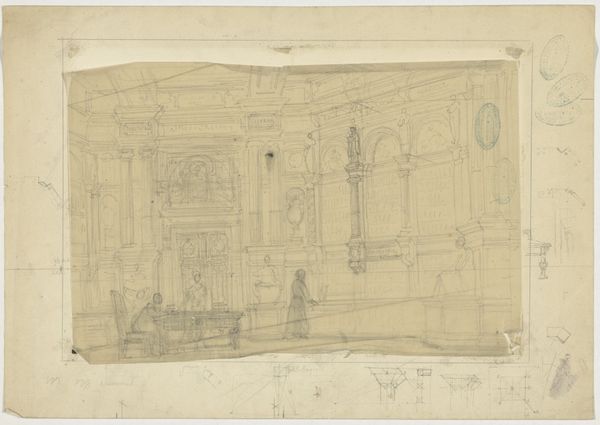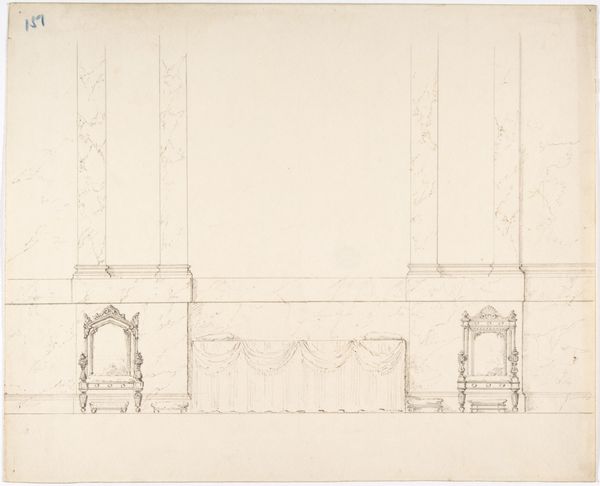
drawing, print, etching, paper, ink, graphite, pen, architecture
#
drawing
# print
#
etching
#
pencil sketch
#
etching
#
paper
#
ink
#
geometric
#
graphite
#
pen
#
cityscape
#
history-painting
#
architecture
Dimensions: 227 × 304 mm
Copyright: Public Domain
Curator: This is Augustus Charles Pugin’s “Round Room Bank,” an etching and ink drawing on paper created around 1807. It’s currently part of the Art Institute of Chicago’s collection. Editor: My first impression is a sense of lightness, despite the grandeur implied by the architectural subject. The lines are so delicate, almost ethereal. Curator: Indeed. Pugin’s rendering showcases a keen understanding of perspective. Look at the underlying grid structure, revealed beneath the finished architectural sketch. It shows his meticulous planning and how the drawing was technically constructed, layer by layer. Editor: That gridded under-drawing certainly impacts the sense of space. Notice how it doesn’t recede in a continuous way but is organized by the implied constraints. But the dome…the way light is suggested through the radiating lines. It draws the eye upward. Curator: Consider the social implications, though. Banks in the early 19th century were symbols of growing commercial power and the shift towards industrial capitalism. Pugin was capturing a very specific moment in the changing use of resources, building construction, and economics, all wrapped into the aesthetics of architecture. Who did it serve and at what cost? Editor: A valid point. And formally, the composition is so intriguing. The contrast between the severe, repeating arches and the more fluid, organic shape of the dome… there's a visual dialogue happening between order and freedom. The artist uses very economical pen strokes that still define the form effectively. Curator: The act of creating the work, the etching and drawing processes also reveal something about labor and the industrializing print market. Printmaking allowed images like these to circulate and influence design and architectural ideas, expanding beyond individual craftsmanship. The print made the image part of the broader cultural marketplace of ideas. Editor: I agree. Observing the image, especially the strategic deployment of simple line-work and shape, one can discern much. The whole artwork suggests this early, pivotal intersection where artistic vision confronts the economic realities that have since come to define the very landscape. Curator: Precisely. Pugin's "Round Room Bank" embodies a specific time when architecture was becoming intrinsically tied to societal power structures. I found investigating its means of production extremely revealing. Editor: For me, appreciating the delicate beauty within the composition reveals an approach to form that still has the power to surprise and enchant today.
Comments
No comments
Be the first to comment and join the conversation on the ultimate creative platform.
